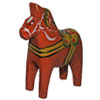Swedish
Swedish 1A (1) and Swedish 1B (2) are taught 3 times a week and we are currently using the textbook Rivstart A1+ A2.
If you are not a currently registered student, you may be able to enroll via Concurrent Enrollment, UC Berkeley Extension. Please note that the Concurrent Enrollment application must be approved by the department. Approval is based on availability of space in the class; enrolled UC students on a waitlist have priority.
If you have any questions please consult the Scandinavian languages coordinator Lotta Weckstrom at lotta.weckstrom@berkeley.edu. She is also the contact when requesting an internal placement test for any course that is NOT the beginning language course (1A) or to request a Language Assessment for external use.
Undergraduates at UC Berkeley can study abroad in Sweden through UCEAP program at Lund University and Uppsala University. There may also be other opportunities for study abroad. Contact Berkeley Study Abroad advisor Michelle Ayazi for more information on studying abroad in Sweden.
Second-year Swedish courses are listed respectively as Scandin 100A and Scandin 100B. These courses are taught with a pan-Scandinavian comparative component due to the relative mutual accessibility of the three Scandinavian “neighbor languages.” Since this format is somewhat unusual, it might need some explanation:
STUDENTS ENROLL IN A COMMON LECTURE ON WEDNESDAYS 11-12
+ A DISCUSSION SECTION FOR THEIR TARGET LANGUAGE AS FOLLOWS:
SECTION 101 = Danish
SECTION 102 = Finnish
SECTION 103 = Norwegian
SECTION 104 = Swedish
Scandinavian 100A-B: Intermediate Nordic Languages
L&S Breadth: Arts & Literature
Continuing students of Danish, Norwegian, and Swedish enrolling in Scandinavian 100A will meet together for one hour of lecture per week (W 11-12) to read and interpret literary and nonliterary texts about inter-Scandinavian communication, linguistics, and language history. In addition to this one-hour combined lecture, students will meet two additional hours per week (in discussion sections with a language instructor) to be instructed in their particular target languages.
Students should enroll in the relevant target language section as follows: Section 101 = Danish; Section 102 = Finnish; Section 103 = Norwegian; Section 104 = Swedish. Students should register in the 100A lecture in addition to the relevant section they will attend. The course is complete with the language and the lecture sections – you must enroll in both parts in order to fully enroll in the course. If you experience a scheduling problem it is essential that you consult the language coordinator.
Students will further develop their basic communicative competence in all four foreign language skills (speaking, listening, reading and writing) within a cultural context in their own target language (Swedish, Norwegian, or Danish). Through the weekly lecture they will gain a deeper understanding of the other Scandinavian languages through tasks and readings. Students will NOT be asked to learn to speak the other two Scandinavian languages, but to learn about them.
Placement: Scandinavian 100A is open to students who have taken either Scandinavian language 1A-1B with a passing grade. A placement test is mandatory for other students who have had 90 hours of in-class instruction (reached the Novice High/Intermediate Low proficiency level) in any Scandinavian language and with a passing grade. The placement test must be taken prior to or within the first week of instruction. Contact the language coordinator to schedule a placement test.
Native, Near-Native, Heritage Speakers: The specific language sections are only open to learners of the specific Scandinavian language of instruction in the section. The course is not open to native, near-native, or heritage speakers of any Nordic language without prior consent from the language coordinator. The course cannot be repeated without prior consent from the language coordinator.
Workload for the combined lecture (e.g. 1/3 of the total grade for SCAND 100A): Two hours of work outside class a week. Weekly task based homework. A take-home written mid-term.
Workload for the discussion section (e.g. 2/3 of the total grade for SCAND 100A): An average of four hours of work outside class per week. The structure of supplemental language sections depends on the language instructor, but usually includes weekly written assignments, oral presentations, an oral and written midterm and final exam.
Section Times: Meeting times for discussion sections might on occasion be changed according to the schedules of the students enrolled, and can therefore vary from the times listed in the online Schedule of Classes. Students should attend the first day of class for more information on possible rescheduling.
Texts: Language sections: textbooks TBA– most often as readers
Lecture/Culture section: Reader
Prerequisite: Completion of Scandinavian 1A-1B classes with a passing grade; consent of instructor.
